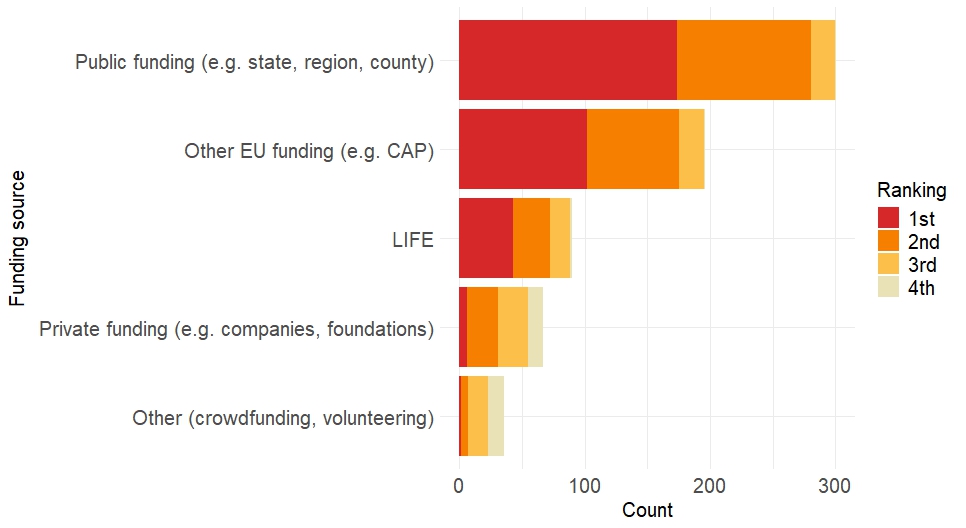The questionnaire is now closed! We received 349 answers.
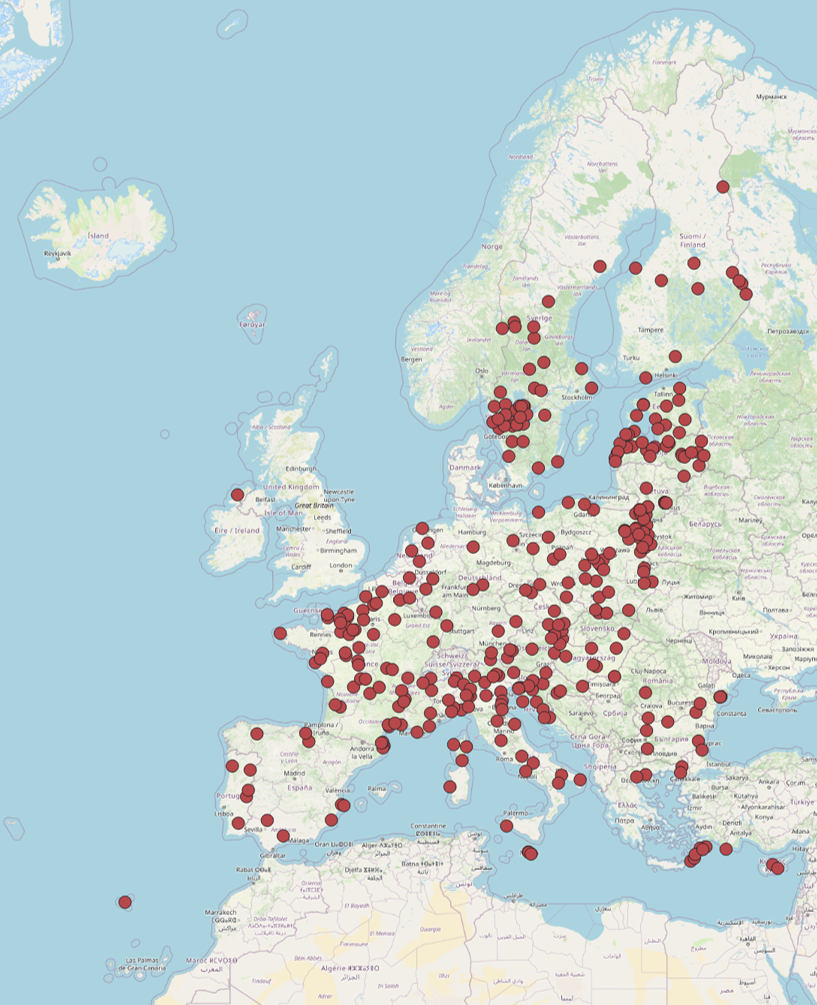
List of management actions
In the plot are shown management actions carried out in the period 2018-2023 divided in different categories. In gray it is shown the frequency of all actions, while in blue it is shown the frequency with which the actions in each category were considered as the most important for biodiversity in a site. Actions related to agriculture and agriculture-related habitats are the most frequent, both in terms of total number of actions and their importance.
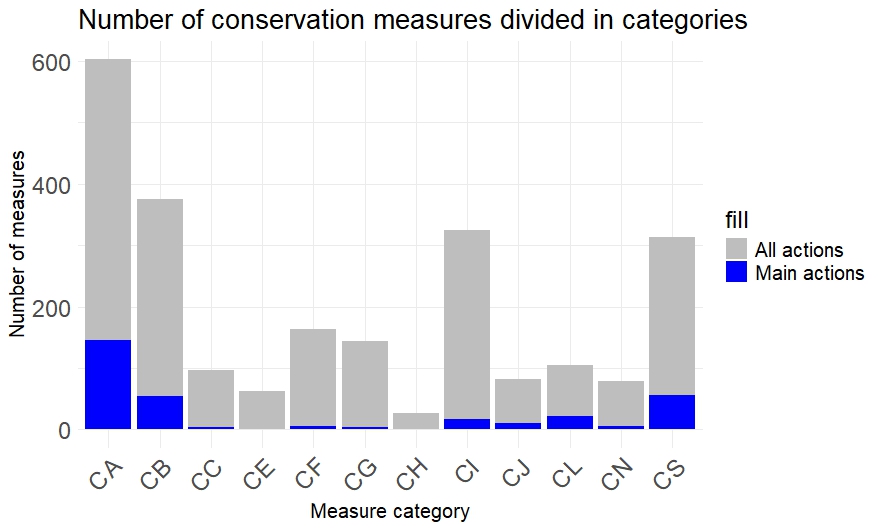
| CA Measures related to agriculture and agriculture-related habitats |
| CB Measures related to forestry and forest-related habitats |
| CC Measures related to resources extraction and energy production |
| CE Measures related to development and operation of transport systems |
| CF Measures related to residential, commercial, industrial and recreational infrastructures, operations and activities |
| CG Measures related to the effects of extraction and cultivation of biological living resources |
| CH Measures related to military installations and activities and other specific human activities |
| CI Measures related to alien and problematic native species |
| CJ Measures related to mixed source pollution and human-induced changes in hydraulic conditions for several uses |
| CL Measures related to natural processes, geological events and natural catastrophes |
| CN Measures related to climate change |
| CS Measures related to management of species from the nature directives and other native species |
Species addressed
Number of species divided per taxon addressed by each conservation measure category. Birds are by far the most frequently addressed taxon, followed by plants and mammals. Reptiles are the least frequently addressed. Conservation measures based on agricultural practices are the main conservation strategy for every taxon.
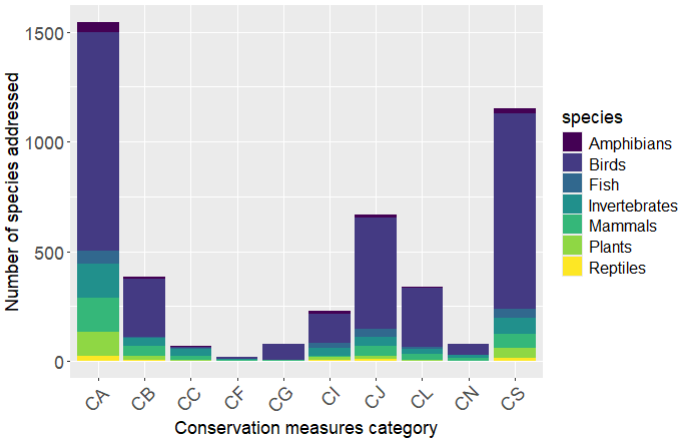
Habitats addressed
Number of habitats divided in groups addressed by each conservation measure category. Natural and semi-natural grasslands formations are by far the most frequently addressed habitats, followed by forests. The matorral is the least frequently addressed. Conservation measures based on agricultural practices are the main conservation strategy for every habitat, except forests and coastal sand dunes and inland dunes.
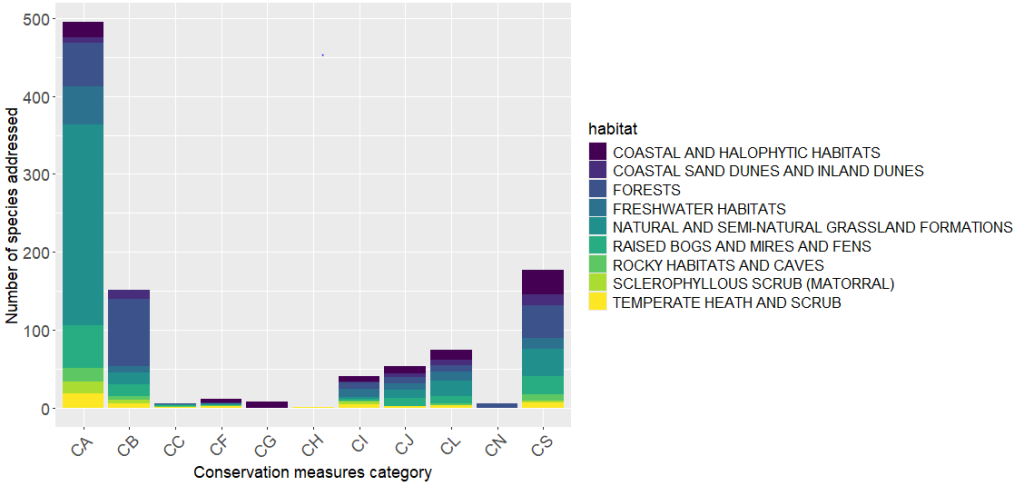
Agricultural actions
The most commonly used conservation measures in the “CA Measures related to agriculture and agriculture-related habitats” category are shown here. Most of them aim at maintaining the benefits of non-intensive agricultural practices.

| CA01 Prevent conversion of natural and semi-natural habitats, and habitats of species into agricultural land |
| CA02 Restore small landscape features on agricultural land |
| CA03 Maintain existing extensive agricultural practices and agricultural landscape features |
| CA04 Reinstate appropriate agricultural practices to address abandonment, including mowing, grazing, burning or equivalent measures |
| CA05 Adapt mowing, grazing and other equivalent agricultural activities |
| CA06 Stop mowing, grazing and other equivalent agricultural activities |
| CA07 Recreate Annex I agricultural habitats |
| CA08 Adapt soil management practices in agriculture |
| CA09 Manage the use of natural fertilisers and chemicals in agricultural (plant and animal) production |
| CA10 Reduce/eliminate point pollution to surface or ground waters from agricultural activities |
| CA11 Reduce diffuse pollution to surface or ground waters from agricultural activities |
| CA12 Reduce/eliminate air pollution from agricultural activities |
| CA13 Reduce/eliminate marine pollution from agricultural activities |
| CA14 Reduce/eliminate soil pollution from agricultural activities |
| CA15 Manage drainage and irrigation operations and infrastructures in agriculture |
| CA16 Other measures related to agricultural practices |
Forestry actions
The most commonly used conservation measures in the “CB Measures related to forestry and forest-related habitats” category are shown here.
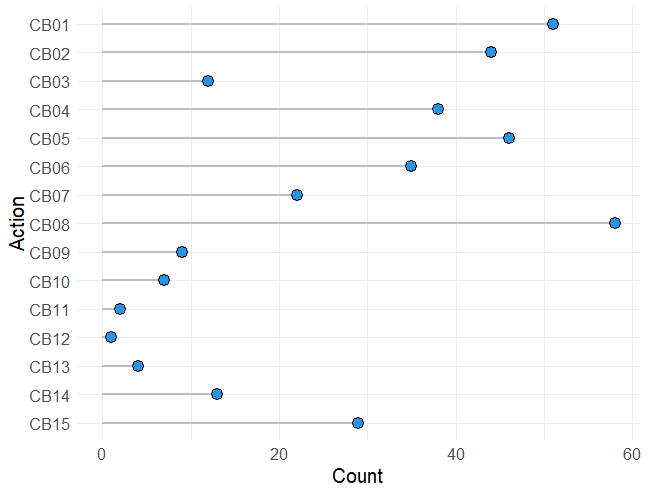
| CB01 Prevent conversion of (semi-) natural habitats into forests and of (semi-)natural forests into intensive forest plantation |
| CB02 Maintain existing traditional forest management and exploitation practices |
| CB03 Reinstate forest management and exploitation practices |
| CB04 Adapt/manage reforestation and forest regeneration |
| CB05 Adapt/change forest management and exploitation practices |
| CB06 Stop forest management and exploitation practices |
| CB07 Combat illegal logging |
| CB08 Restoration of Annex I forest habitats |
| CB09 Manage the use of chemicals for fertilisation, liming and pest control in forestry |
| CB10 Reduce diffuse pollution to surface or ground waters from forestry activities |
| CB11 Reduce air pollution from forestry activities |
| CB12 Reduce marine pollution from forestry activities |
| CB13 Reduce soil pollution from forestry activities |
| CB14 Manage drainage and irrigation operations and infrastructures |
| CB15 Other measures related to forestry practices |
Unaddressed threats
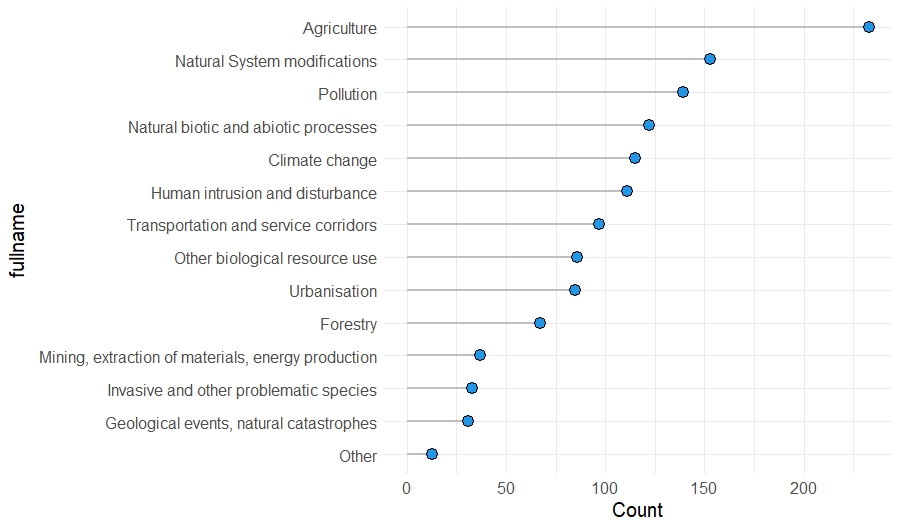
Unaddressed threats related to agricultural practices
To better understand this graph you can check what the codes mean at this link (or if you are at the poster session you can look at the printed papers!). Unaddressed agricultural threats are coming both from intensive practices (e.g. excessive use of pesticides and fertilizers) and from the lack of non-intensive practices.
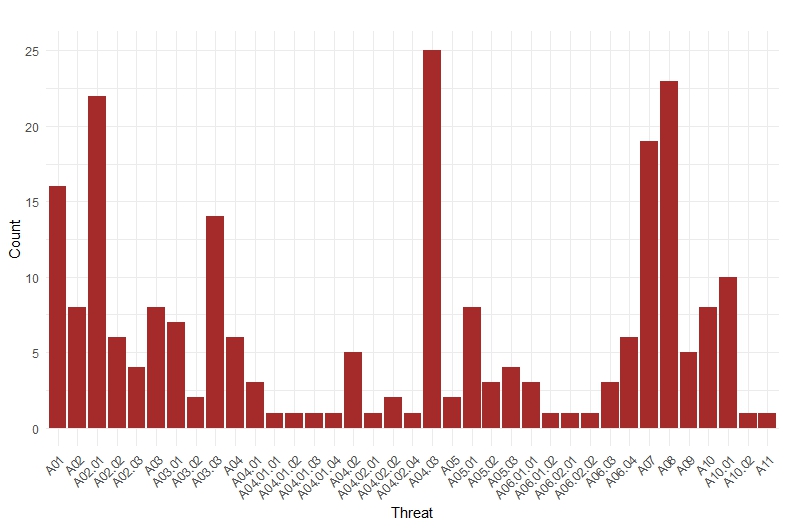
Sources of funding
Public funding was identified as the most important source for managing protected areas, followed by other EU sources (excluding LIFE). LIFE ranked third, and private funding came fourth
